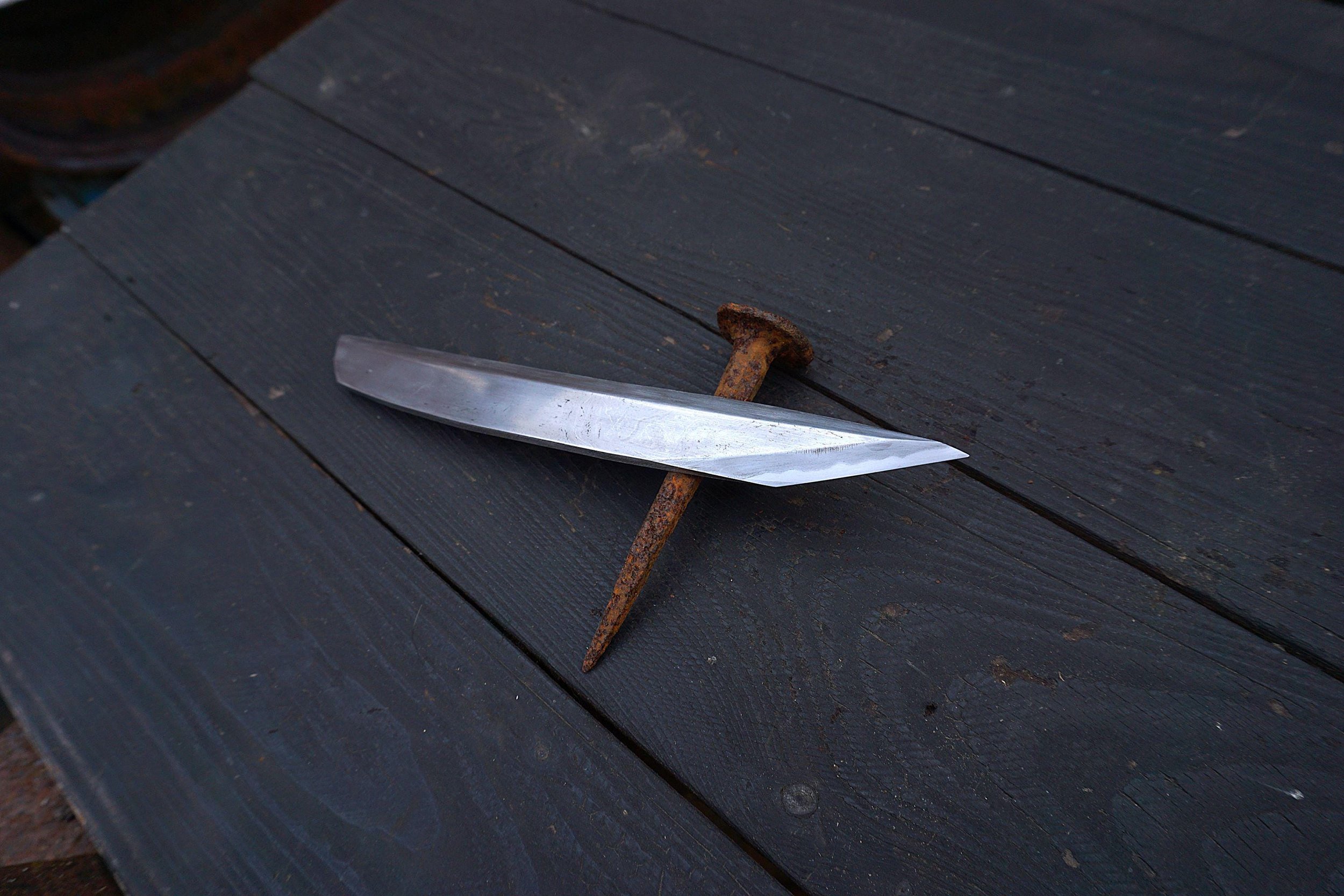KIRIDASHI
Behind The Scenes
I saw this knife in a Japanese movie at first and I fell in love with it at first sight.
Since I had no idea what kind of knife it was, I started searching. The results of my search showed that it was a Kiridashi, which is a very popular knife in Japan. Is used there for absolutely everything that can be done effectively with this length of blade, i.e. edge.
The first attempts to make a kiridashi were probably like this: I took a piece of steel, sharpened the blade, and the kiridashi was born. But that wasn't it, because after a deeper study of photos and videos of how this knife is made, I found out that a piece of high-quality steel is forge welded onto a piece of iron, which creates the desired effect on the blade, the so-called hamon.
Because the forge welding process was not unfamiliar to me, I started making Kiridashi with this method. But after polishing the blade had a indefinite metallurgical contrast between iron and steel, the so-called hamon, created a kasumi surface. So I started learning again, everywhere was talking about wrought iron which is iron that was used for almost everything before the advent of modern mid steels. The best example of what it is made of wrought iron is the Titanic or the Eiffel Tower. The properties of wrought iron are completely different from those of modern mid steels.
Wrought iron chain was picked from the mud on the shore where the shipyard was
A piece of chain ready for forging, it will be the body of Kiridashi
Since wrought iron is no longer produced, I tried to find out where it was most commonly used, because I live in a town where fishing boats were manufactured. So I tried my luck where these shipyards used to be and luck smiled at me. I found the remains of large chains, that were made from wrought iron, while walking around this former industrial zone. I collected many wrought iron rivets from the beaches which the hulls of fishing boats were connected (yes, the Titanic was riveted in the same way).
The properties of wrought iron are different from modern steel, mainly in that it is a little tougher and better resistant to salt water, which is why some of these chains have been in that salt water for over 100 years, modern mid steel would not have been there long ago.
And I can work on creating new kiridashi. From the mentioned chains and rivets I created a rectangular bar and forge weld a piece of high-quality carbon steel, the result was exactly what I expected it to be. After polishing the blade, a beautiful contrast between the carbon steel and the wrought iron, the so-called kasumi, was revealed.
The kasumi surface can only be achieved using natural grinding and polishing stones, so it is best to purchase them from Japan.













